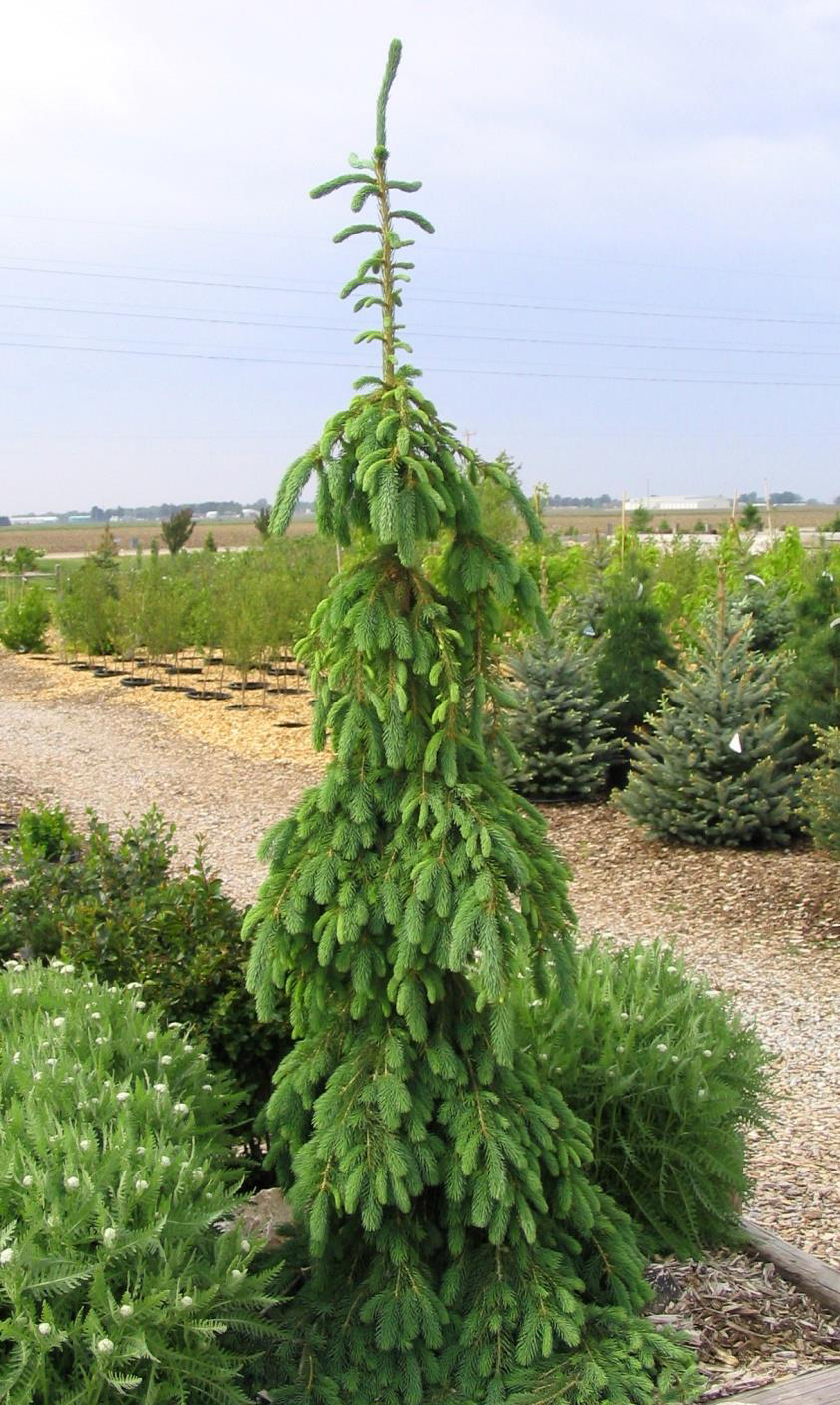How Big Do Black Hills Spruce Trees Get
Spruce, White (Black Hills Spruce)

Spruce, White (Black Hills Spruce) Coniferous
Picea glauca
Origin: Boreal forests of North America
White spruce, also known as Black Hills spruce in our region, is an extremely hardy evergreen conifer native across the northern boreal region from Alaska and northwest Canada to Newfoundland, and dipping south into the US from Minnesota to northern New England. There is an isolated population in the Black Hills of South Dakota, which is where the common name Black Hills Spruce comes from. The tree has been planted in significant numbers across Nebraska where it is used in windbreaks, wildlife plantings, residential landscapes, and community plantings.
Where To Grow
White spruce is best grown in moist, well-drained soils in full sun. It will tolerate some light shade and once established will tolerate moderate drought. Best performance is in colder winter climates with cool summers, but it has proven quite adaptable to the central and northern Great Plains. Good air circulation is recommended for the tree where humidity is high. As with other spruces, white spruce should be planted in groups when planted in the open.

Size at Maturity
| Tree Height | Tree Spread |
| 50-70' | 20-30' |
Tree Characteristics
Black Hills spruce grows 50-70' tall in cultivation with a relatively narrow, cone-shaped crown. The blue-green needles (to 3/4") are on small woody pegs and have sharp tips. Needles are pungently aromatic when crushed. Needles have a glaucous (white waxy coating) bloom, hence the common and scientific names. Branchlets do not droop. The cylindrical pale brown cones are small for a spruce, growing about 2.5" long, with flexible scales.
Wildlife Benefits
White spruce supports a wide range of birds, mammals and other animal species. It is also widely used for winter cover.
Utilization
White spruce is a major timber tree in Canada where it's used for construction lumber and also for paper-making. The wood is frequently exported to Japan where it is used to make go boards. It is also cultivated by many growers as a Christmas tree.
Additional Considerations
The species is susceptible to various diseases and insects including needle and stem rusts, cankers, spruce sawfly, spruce budworm, and eastern spruce beetle. Spider mites and bagworms are the most common problems in Nebraska, especially on stressed trees. Repeated infestations can do serious injury to the plant. As our climate becomes generally warmer, it's anticipated that several evergreen species, including white spruce, will become more difficult to grow in Nebraska.
Related species
- Black Hills spruce is a variety of white spruce native to a geographically isolated area in and around the Black Hills of South Dakota. It was originally considered a distinct sub-species calledPicea glauca var.densata, but many experts now designate it simply asPicea glauca 'Densata' arguing that its differences from the species are insufficient to justify classification as a distinct variety. In the Black Hills, it typically grows rather slowly into a dense, narrow form from 30-50' tall. It is distinguished from the species by being slightly smaller and by having a denser habit, brighter green needles, and slightly shorter cones. Black Hills spruce is considered by many to be a superior ornamental tree to the species and is the most commonly planted white spruce in Nebraska. Not surprisingly, it is the state tree of South Dakota.
- Black Spruce (Picea mariana) has a very similar native range to white spruce but is found on wetter soils, sometimes in swamps and bogs, thus making it a possible evergreen for wet sites. Its common name comes from its very dark, almost black, small cones.
Interesting Facts
The species name glauca is in reference to the gray-green look of the foliage. The tree is popular for bonsai. White spruce is the provincial tree of Manitoba and the state tree of South Dakota.
- Tips for planting success
- Developed by Justin Evertson, Kyle Martens, and Denise Wally
How Big Do Black Hills Spruce Trees Get
Source: https://nfs.unl.edu/woody-plants/black-hills-spruce